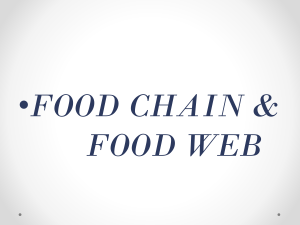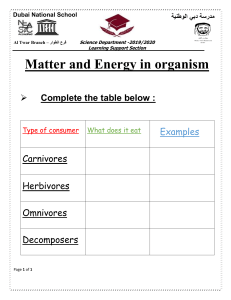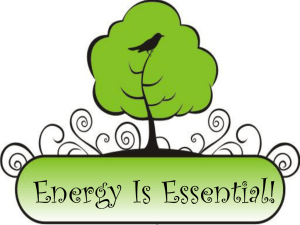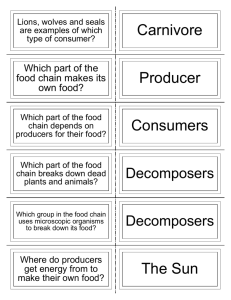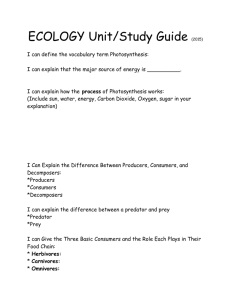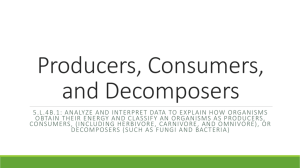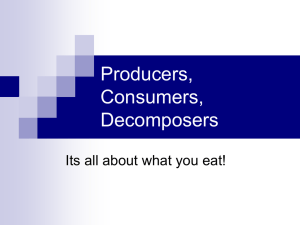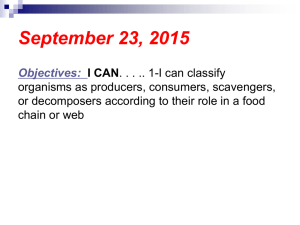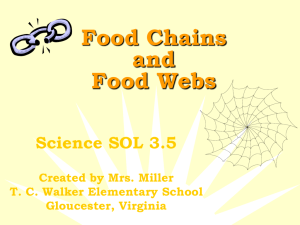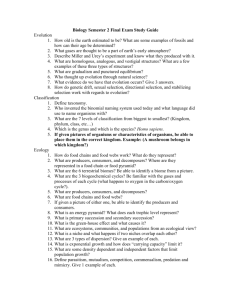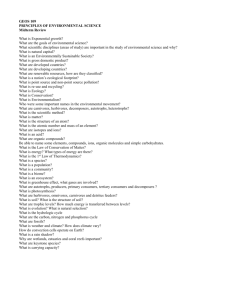File
advertisement
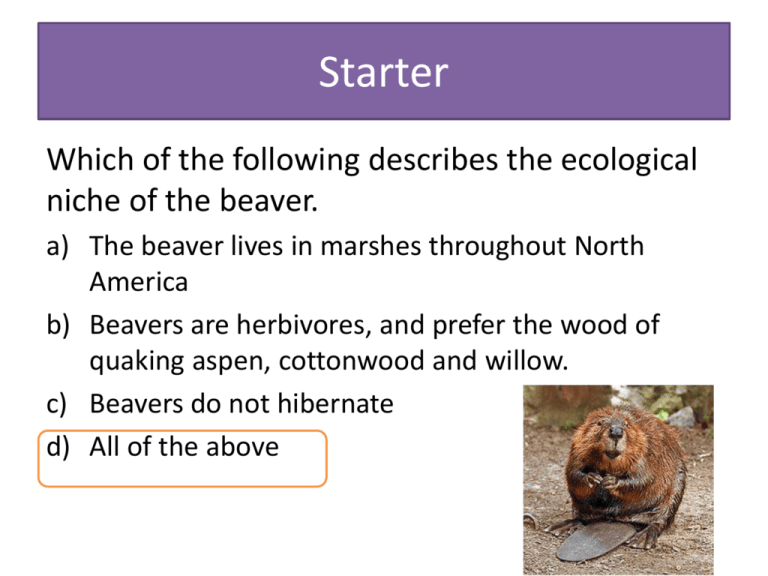
Starter Which of the following describes the ecological niche of the beaver. a) The beaver lives in marshes throughout North America b) Beavers are herbivores, and prefer the wood of quaking aspen, cottonwood and willow. c) Beavers do not hibernate d) All of the above Learning Intentions • To understand how energy flows through an ecosystem by creating food webs Success Criteria • I can identify producers, composers and decomposers and can place them in the correct order. Living World Notes Food Chain: The path by which energy passes from one living thing to another. What does the arrow represent? Arrow: represents the flow of energy! NOT WHO EATS WHO! What’s in a Food Chain? 1) Producers 2)Consumers 3) Decomposers Producers Organisms that take non-living matter (energy from the sun, water, minerals, carbon dioxide) and use it to produce energy. Consumers • Organisms that hunt and gather food because they cannot produce their own food. Three Types of Consumers Herbivores Carnivores Omnivores 1) 2) 3) Consumers- Herbivores • Animals who eat plants such as: –grasshoppers –rabbits –squirrels –deer –pandas Consumers- Carnivores • Animals who only eat other animals such as: –tigers –lions –hawks –wolves –cougars Consumers- Omnivores • Animals who eat both plants and animals such as: –humans –bears Decomposers • Organisms which feed off dead plants and animals • Returns the nutrients back to the earth Let’s Look at a Food Chain • A food chain is a simplified way to look at the energy that passes from producers to consumers. Food Chain Activity Is it really that simple? What is a Food Web? • A more realistic way of looking at the relationship of plants and animals in an environment • Several food chains linked together • A predator from one food chain may be linked to the prey of another food chain Homework Food Webs • How many food chains can you make from this food web?
